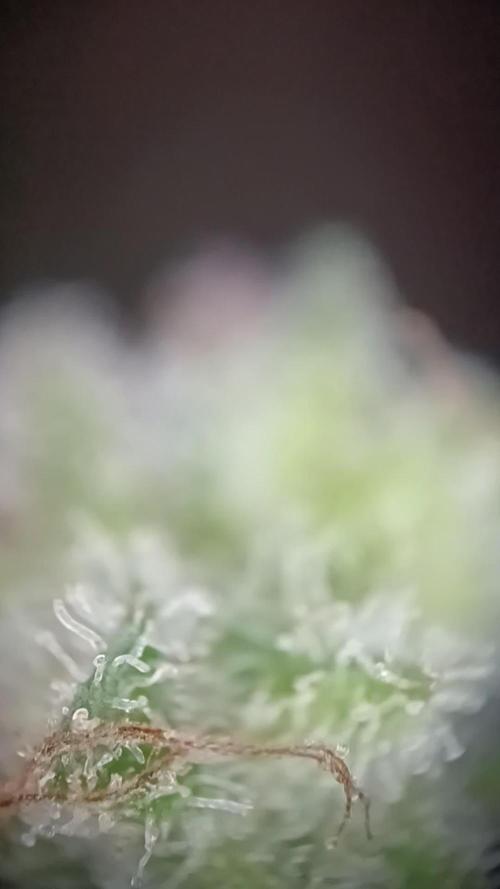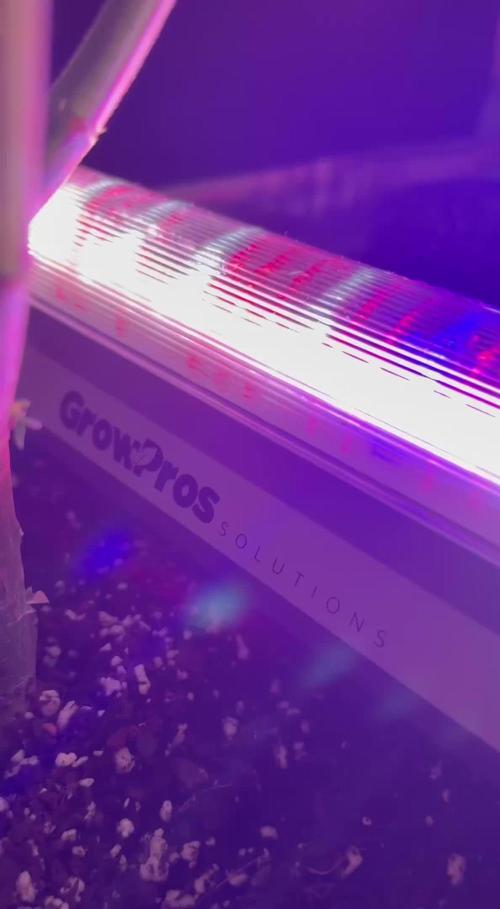The Grow Awards 2026 🏆 

































Likes
Comments
Share


@MrReeferMadness
Follow
The psychosis looks like it's stopped growing right at it limit for the space that it is in... hopefully it doesn't grow anymore than 4 inches from now.
All plants are doing great tbh and the space is getting limited for maintenance now but after week five I won't need be inside the room until around harvest time !!
Likes
3
Share


@Rinna
Follow
Unfortunately, the Blue am and dynamighty (also due to their long flowering periods) didn't make it. Told my roommate to cut the plants when I saw that video and those pics but it was far to late already..
Likes
8
Share


@NoProbation4Weed
Follow
Very Nice looking and good Smelling Plant. Buds after Trim are medium dense but very tasty.
Flavourwise it goes into ripe Berrys with a hint of Citrus and Soapyness in the background.
The Plant looks exactly like on the pictures High-Giraffe-Seeds shows on their website.
All in all definetly a recommendable Plant to grow.
Likes
3
Share


@Ogbangbang2981
Follow
oh did I add I noticed she showing sex this morning as the sun rises
so this morning Feb 18 6:22am I decided to up my nutrients
with the first bottle of nutrients I mixed was on a early veg level so I just add 2ml of each my fox farms advance nutrients along with some algas ( made with seaweed somewhere on the island ) which is a root stimulant and a few drops less than a teaspoon of molasses. and gave my baby a deep feed hope I dont regret this hope I dont get nut burns .
Likes
19
Share


@creichs
Follow
Switched to my 5 gal pots now, dumped 6L of water into each plant to get the pH back down still waiting for them to dry out a little before the next watering which should be less so next week will have water amounts
Height is for the holy punch again. Power flower is still around 1.5"
Likes
28
Share


@PrairieFrostGrow
Follow
Week 9 .......... Flower Week.........June 6 to 12, 2020 ........ Days 57 to 63 from germination
She took a lot of shape this week and buds are swelling. She has reacted well with Massive and has increased her nodal spacing. Now she needs to work bulking up and filling in that spacing😀👍
A little more leaf strip at the end of the week to let more light into the middle of her. Focussed on the leaves on the inside of her and left a number of the fan leaves on the perimeter of her to help with sugar production.
Her hairs have never really been long but the buds are swelling in nicely. They started off a little small but have grown a lot wider in the last week.......as expected in week 9.
Starting to see some possible nutrient issues forming as she is aging and some of her leaf tips are starting to curl down a bit. Red hairs have started so we should be less than three weeks to go and guess at roughly 2 weeks to go. Will be feeding next week but that might be the end......see what the week brings.
Environment has been hovering at 79 degrees and 61 percent humidity for most of the week. Yeast and sugar CO2 in use.
Still feel there is going to be trade off battling the pH issues of the pots by feeding her 4.5 water and feed. I have to keep it that low to have a runoff of 6.6pH🤪🤪🤪🤪🤪 Going to start letting the pH drift higher the next couple of days though and give a couple of waterings at 5.6 to ensure she is taking up enough phosphorus and potassium.
The frost coming out on this girl now but she is a little slower coming on. Anticipate the last two weeks here should see good frost coming out. Have not even really looked at it too much yet to be honest.
Changed up some of the supplements this week and added in some Advanced Nutrients Big Bud and Overdrive. Always liked Overdrive and when moving the bottles had more than I realized so figured I would change it up a bit......she is already fighting pH issues so no further harm.
She is a very pretty little girl and she has beautiful shape. Not bending over her top seems to have been okay for this girl. Just keeping the side branches pulled apart so the light gets done the middle to bud sites😃 Nice work Sweet Seeds.....she is looking great so far.........freaking resilient dealing with pH so high!!!!!!!!!🙏🙏
Little more detail:
June 6, Day 57
VPD - 1.2
3L feed - Big Bud, Vitathrive, Rezin, Liquid Weight, Velokelp, CalMag, Dual Fuel.
1150ppm and 5.0pH.......pH little higher today.
Lots of runoff as fed late last night.
Keep an eye to see the result of the higher pH.
Colas more defined today. Standing up nice and looking thick today.
Fairly green though so keep and eye on the nute levels.
June 7, Day 58
VPD - 1.2
7L water - 285ppm and 4.4pH......checking pH in medium
Runoff was 580ppm with 6.8pH
Hairs are whiter now and buds are wider and stacking.
June 8, Day 59
VPD - 1.2
Dry out day.......
She is dark and bushy.
June 9, Day 60
VPD - 1.2
4L Feed - Sensizym, Rezin, Vitathrive, Liquid Weight, Massive, Terpinator, Dual Fuel.
1150ppm and 4.2pH.......pulling down a little more since last runoff number.
Fair bit of runoff from the feed.
Starting to fatten up a bit more.....branches are looking larger.
June 10, Day 61
VPD - 1.2
3L Feed - Overdrive, Rezin.
485ppm and 4.5pH
Just some supplements and feed tomorrow.
Her side branches are reaching up more and increasing the nodal spacing.
Now she needs to fill that gap in😃👍
Noticing a pattern with Massive and nodal spacing?????
June 11, Day 62
VPD - 1.2
Dry out day.......
June 12, Day 63
VPD - 1.2
4L Feed - Terpinator, Overdrive, Rezin, Vitathrive, Sensyzime, Liquid Weight, Dual Fuel.
1380ppm and 4.5pH
Hitting her and Sweet n Sour harder as they get closer to the end.
She is 19” tall now and 24” wide
Leaf strip to increase light penetration......lots of small leaves.
Tricomb production getting going now.
Nice little Cannabis plant😋😋😋
Likes
20
Share


@AlpineGoat
Follow
Final week of water.. this week will be the last one, from sunday 7 she will be deprived of water until she start showing amber trichomes.. then I will chop her!
Smells like citrus and gasoline :Q_
From tuesday to friday just dry soil.. she start drying still alive 😛
Likes
49
Share


@LockDownGrow
Follow
Ok just finnished a blunt of this a out an hour ago, and I do not smoke blunts lol
But it seems only right too do a real smoked reveiw ,
So the fbt7 has been dry now for about 2 weeks and in a jar and today was the day too take the first bud too try so I rolled a fat one " fat one in photos lol ,
So for me the flavour just isn't there yet and am hoping that will come after a cure ,
So I smoked this all too my self and qiukly ,
Within a few minutes I went white as a ghost as was twitching the the corner hehehe,
This is very strong bud and I would go as far as saying it's probably the strongest bud I've had in years ,
I am what I would describe as a joker smoker , as I turn my bud into oils and do not smoke it ,
But any serious cannabis smoker will absolutely love this strain ,
Well done fast buds and thank you :)
Likes
31
Share


@Trippie
Follow
First 45gr of tops are off. Keepin an eye on the rest. Ma lenz came in tha mail today, awesome! Will be easy to follow up harvest times.
2nd layer still good
Likes
26
Share


@GrowGuy97
Follow
Will update with more pictures & comments soon thanks for following friends & happy growing!✌️🏼🌱
Likes
6
Share


@colla69
Follow
Everything going well so far, Res change on day 19 + started ScrOG
Day 21 will have the first 12h night.
Need to keep scrogging during the stretch.. but i won't be here -.-
UPDATE:
I will be going away at the and of this week for Approx 14 Days..
Day 25 [f3] I will move the plant to a bigger container so that it has enough water to survive on its own
Likes
16
Share


@eldruida_lamota
Follow
Familia, estoy de vuelta y actualizo la cuarta semana de estas Blueberry Cheese de Zambezaseeds.
Tienen alguna carencia que próximamente a de ser solucionada 💪 espero la próxima semana se solvente.
Por lo demás fenómeno las flores ya están formando tricomas y me encanta.
Aparte de que siguen formándose progresivamente todas sus flores.
Agrobeta:
https://www.agrobeta.com/agrobetatiendaonline/36-abonos-canamo
Mars hydro:
Code discount: EL420
https://www.mars-hydro.com/
Las maximas de temperatura no superan los 26 grados y las mínimas no bajan 20, así que no me puedo quejar.
Los niveles de humedad también son los correctos van entre 50%/65% de humedad relativa.
Por supuesto el Ph lo estamos dejando alrededor de 6.
Hasta aquí es todo, buenos humos 💨💨💨.
Likes
11
Share


@growerflowerweed
Follow
bueno hemos iniciado el dia de hoy con un transplante final de cada de estas niñas las he transplantado a un sustrato propio hecho por mi con los suficientes minerales y propiedades para qeu este cultivo sea una locura , solamente estoy con pulverixador
Processing
Likes
27
Share


@Dunk_Junk
Follow
I'm so excited! This week she entered flowering!
Almost doubled her height! Grew 22cm this week!
I have transplanted her into a 10 Litre fabric pot.
I've never used these before, but they look promising. Different to airpots. I'd say more extreme tbh. Oxygen to the root zone is never a bad thing 😎
Likes
3
Share


@Ninjabuds
Follow
My nine Week 7 flowers are thriving under the new GrowPro Solutions under-canopy lights. The lights have really brought out some amazing colors in the buds. It's so cool to see how much they've changed in just a day! I'm excited to see how they develop even more in the coming weeks.
Likes
6
Share


@TommyBVRSA75
Follow
Video con algunas impresiones sobre los problemas que estamos teniendo con los grows desiguales en su fenotipo.
Likes
7
Share


@sellem
Follow
Happy belated new years! Work and Holidays have taken a toll not only on me but the plants as well. Sadly, i didnt take any pictures.
Also, Afghan Kush is yellowing quite a bit and showing signs of calmag def, while the blueberry just now started showing signs of a developed Phosphor def. We will try and tackle those problems in week 8, where ill also add more pics again. Im putting those issues in relation to me overwatering the shit out of them in the first couple of weeks and also by trying to delay adding flower nutes and not adding preventive calmag, which ill probably do from now on, since my previos run also showed some minor calmag problems, but nothing as drastic as this now.
other than that, theyre growing, and the afghan kush is putting on some mass. Blueberry is chilling but als way more bushy.
See you next week and enjoy the timelapse! :D
























